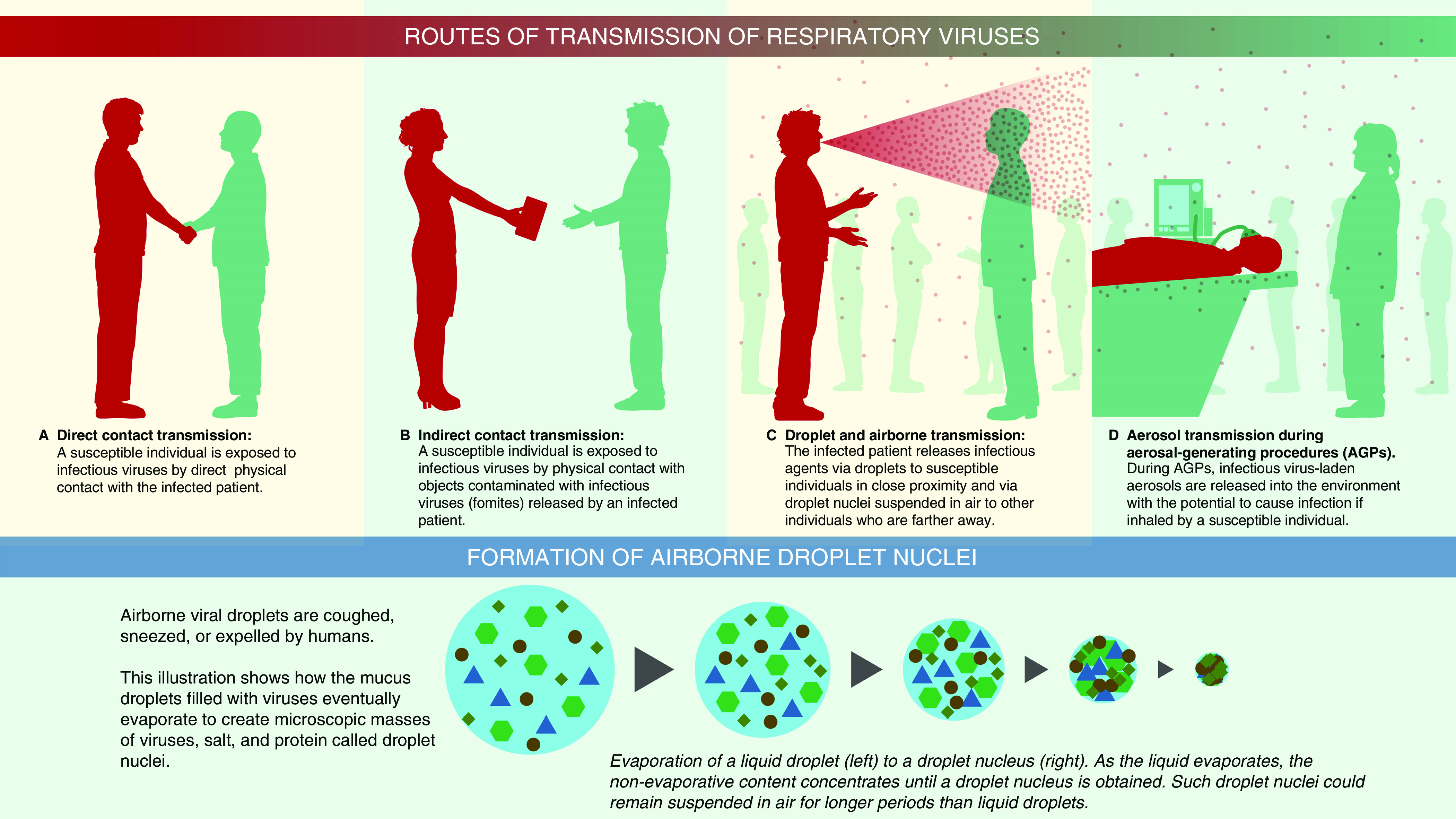Figure 2.

Illustration to show various routes of transmission. For contact transmission, an infected person can transfer virus-laden respiratory secretions by (A) direct physical contact or (B) indirectly. If an infected person sneezes or coughs and droplets deposit or if they have the virus on their hands from touching their face or blowing their nose and then touch an object or surface, then that object or surface serves as a repository for the contagion. When another individual touches the same object or surface that has the virus on it and then touches their mouth, nose, or eyes, the virus is transmitted to these mucosal surfaces. The most common mode of spread for respiratory viruses is via (C) respiratory droplet transmission. Virus-laden droplets (generated by coughing, sneezing, or talking) are propelled from an infected person directly onto the mucosal surfaces of a host. Respiratory droplets are larger and generally fall to the ground after traveling short distances. Transmission of infection can also occur indirectly after the infected droplets have deposited if a host touches the contaminated surface and then touches their face. (C) Airborne transmission occurs when virus-laden fine respiratory droplets remain viable in the environment and are inhaled by a susceptible individual. This transmission can occur either directly by inhalation of fine droplets expelled from (C) an infected person or (D) during aerosol-generating procedures on an infected individual. Larger droplets expelled by coughing or sneezing evaporate, and these smaller and drier droplet nuclei containing infective microorganisms (lower panel) remain suspended in air for extended periods. They have the potential to deposit in the lower respiratory tract after they are inhaled. Larger droplet nuclei that settle out from the air can potentially be resuspended after their size decreases from evaporation, in combination with an aerosol-generating activity such as making a bed or while doffing personal protective equipment.
